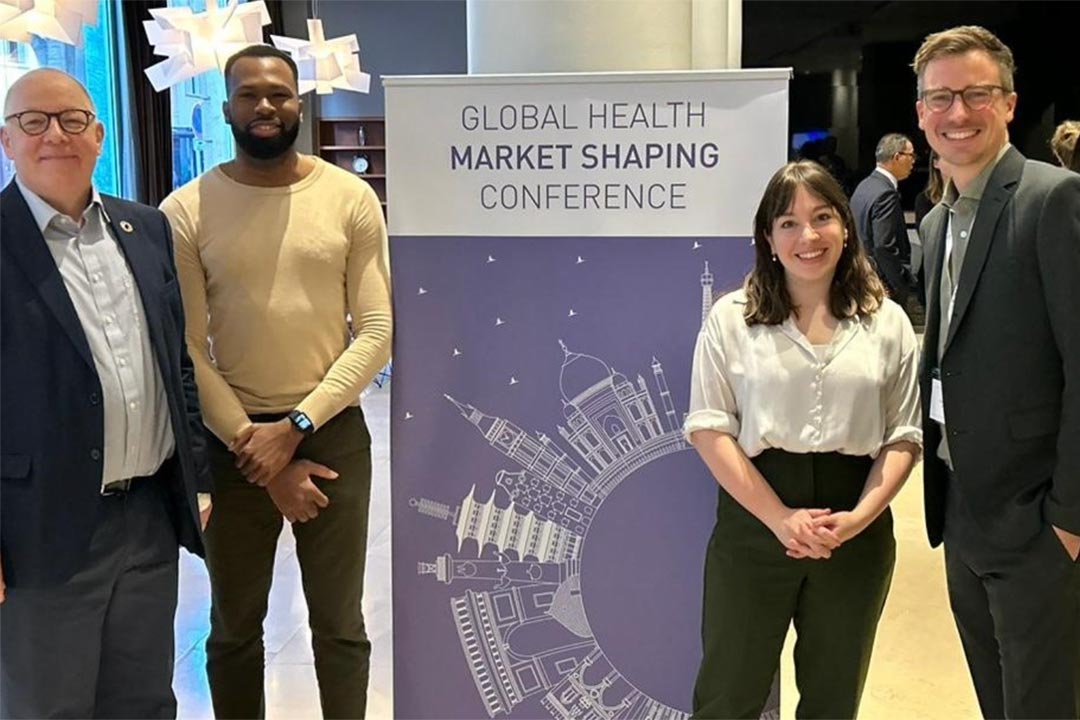Do you speak market shaping? Reflections from the first Global Health Market Shaping conference
The first ever Global Health Market Shaping conference was held earlier this month, underlining the importance of a common language for market shaping.
- 26 March 2024
- 4 min read
- by MedAccess

Market shapers gathered in Barcelona earlier this month for the first ever Global Health Market Shaping conference. MedAccess colleagues and I joined representatives from industry, global health, civil society and governments who aim to address market-based barriers to access for health products to share learnings, find areas for collaboration, and generate new ideas.
We heard from key actors across the health product development and deployment pathway about their experiences and approaches to market-shaping. Together we all discussed a wide range of opportunities and challenges that market shapers need to confront, such as what it might take for regional manufacturing to succeed, and the difficulties of working in fragile and fragmented markets.
(A lack of) agreed definitions
Having everyone present in one room was an opportunity for an open conversation about where we are with market shaping in 2024. It was the first time stakeholders bringing such wide-ranging perspectives were present in the same place at the same time, with the intention of learning from our past and setting a future direction for the field. But as the conversations began, we all agreed on a simple truth: we all mean something slightly different when we're talking about market shaping.
Why is this a problem? Because without agreed definitions it is much harder to recognise, address, and share the risks throughout the product development and deployment continuum. All of us in the room have a role in addressing these risks, so it is essential that each partner understands others' perspectives and challenges. This is one of the first steps towards bridging the gap between supply and demand so that people can access the products they need.
Understanding the supply-demand divide
When demand-side actors – such as procurers and partners who work to generate demand for a health product – talk about market shaping, they are looking at the overall needs of the population. Their primary concern is suitability and cost-effectiveness of the product and the overall size of the gap. They consider whether this product is suitable for the people and context in which it is most needed, and whether there is sufficient infrastructure and support to introduce it effectively. Their aim is to map the gap in need and identify the total population that might benefit from access to a product.
Have you read?
When supply-side actors, such as manufacturers, talk about market-shaping, their primary consideration is whether their product will be purchased, at what quantities and over what period. They assess and measure the serviceable available market (SAM) – the number of people who need the product and can afford it – and make decisions regarding production capacity and registration based on the portion of need they think they can realistically reach and still recoup their investment and make a profit.
Each group has the answer to each other's question, but when we're making decisions based on differing framing, the gap between demand and supply, need and SAM, can remain.
Market shaping tools to plug the gaps
Market shaping tools can be used plug some of that gap by increasing the feasible and realistic reach of a product, bringing SAM closer to need. Market shaping in global health has developed significantly over the past decade, during which time the range of available market shaping tools and those who can deploy them has proliferated. Tools such as advance market commitments, pooled procurement mechanisms, forecasting and quantification of demand, and volume guarantees can be used in creative ways to address a wide-ranging set of barriers to access.
For more effective application of these market shaping tools, aligning definitions is the first step. The GHMS conference helped us start the conversation, but there is still a long way to go until we're all speaking a common language.
Written by
Tristana Perez, Development Impact Executive at MedAccess
Website
This article was originally published by MedAccess on 20 March 2024.





